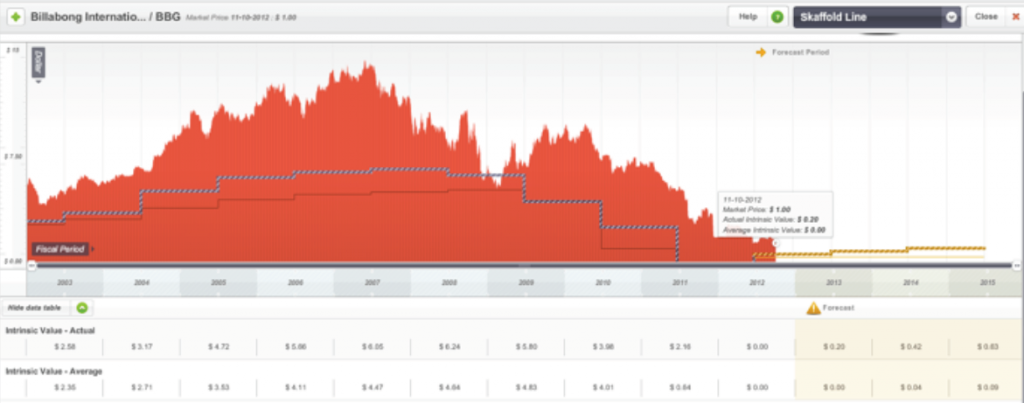Did TPG take a look at Skaffold?
On Friday TPG pulled their offer for Billabong. We have written about Billabong extensively here at the Insights blog and while TPG pulling out may come as a surprise to many investors and commentators, that’s not the case here.
Skaffold has had BBG sub-investment grade since June 2011 – eighteen months and worse, its earnings, return on equity and intrinsic value have been in decline since 2007.
TPG have made a sensible decision irrespective of whether it was their own decision influenced by the loss CVC are taking on Nine or by investors suggesting they might not support the next fund if TPG proceed.
Fig 1. Billabong Intrinsic value Chart (Courtesy: Skaffold.com)
Perhaps if CVC had Skaffold when they bought Nine they might have been in a different position today.
Bottom line, the higher the price you pay, the lower your return. BBG reported equity of $1 billion in June this year and it is forecast to earn just 3.47%. A decent return at present rates of earnings could only occur if the purchase price was a third of the equity (and that’s excluding hundreds of millions in debt), which is about $315 million.
TPG weren’t proposing to pay $315 million, they were proposing to pay $694 million! The higher the price you pay, the lower your return. You can see in Figure 1 that the intrinsic value is not only substantially lower than the current price, but it has been in decline since 2007. We prefer businesses with rising intrinsic values – they’re the ones that are easier to sell at a profit down the track.
Now two bidders have walked away after seeing the books. What could small share market investors know (that private equity does not) that warrants their confidence to purchase shares? We reckon some of them might be mistaking speculation for investing. Thanks Skaffold.
